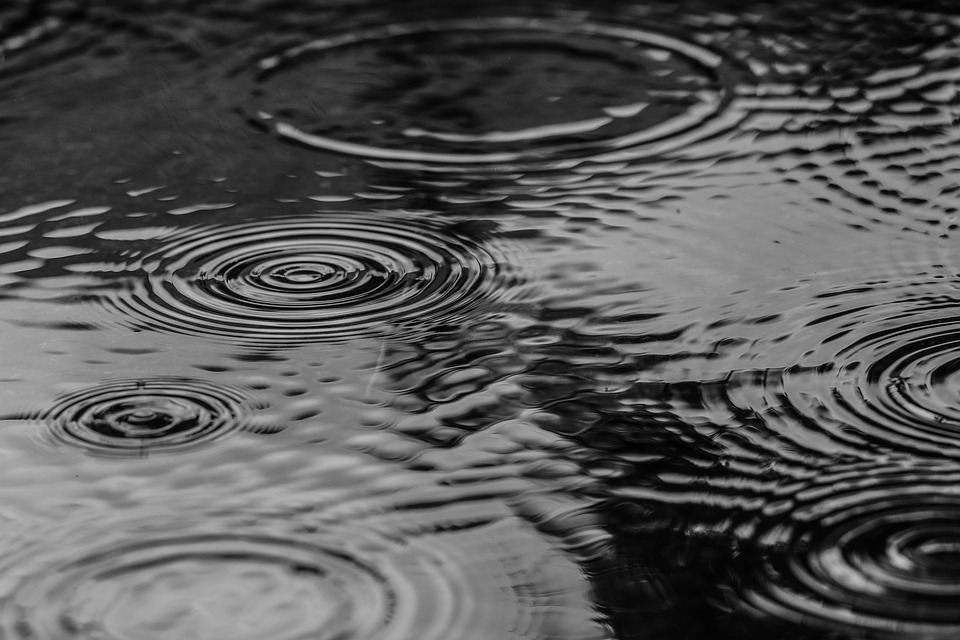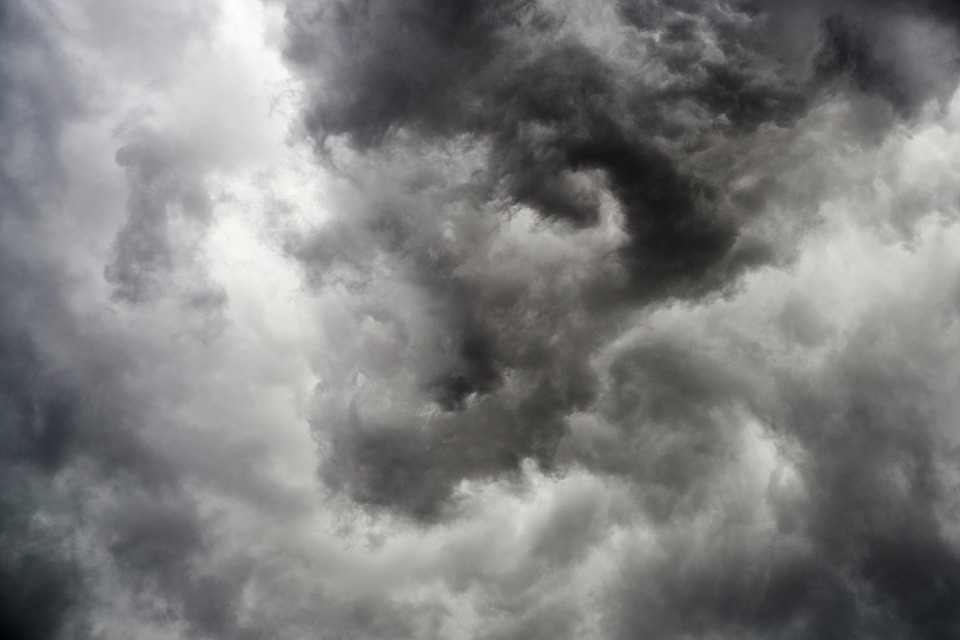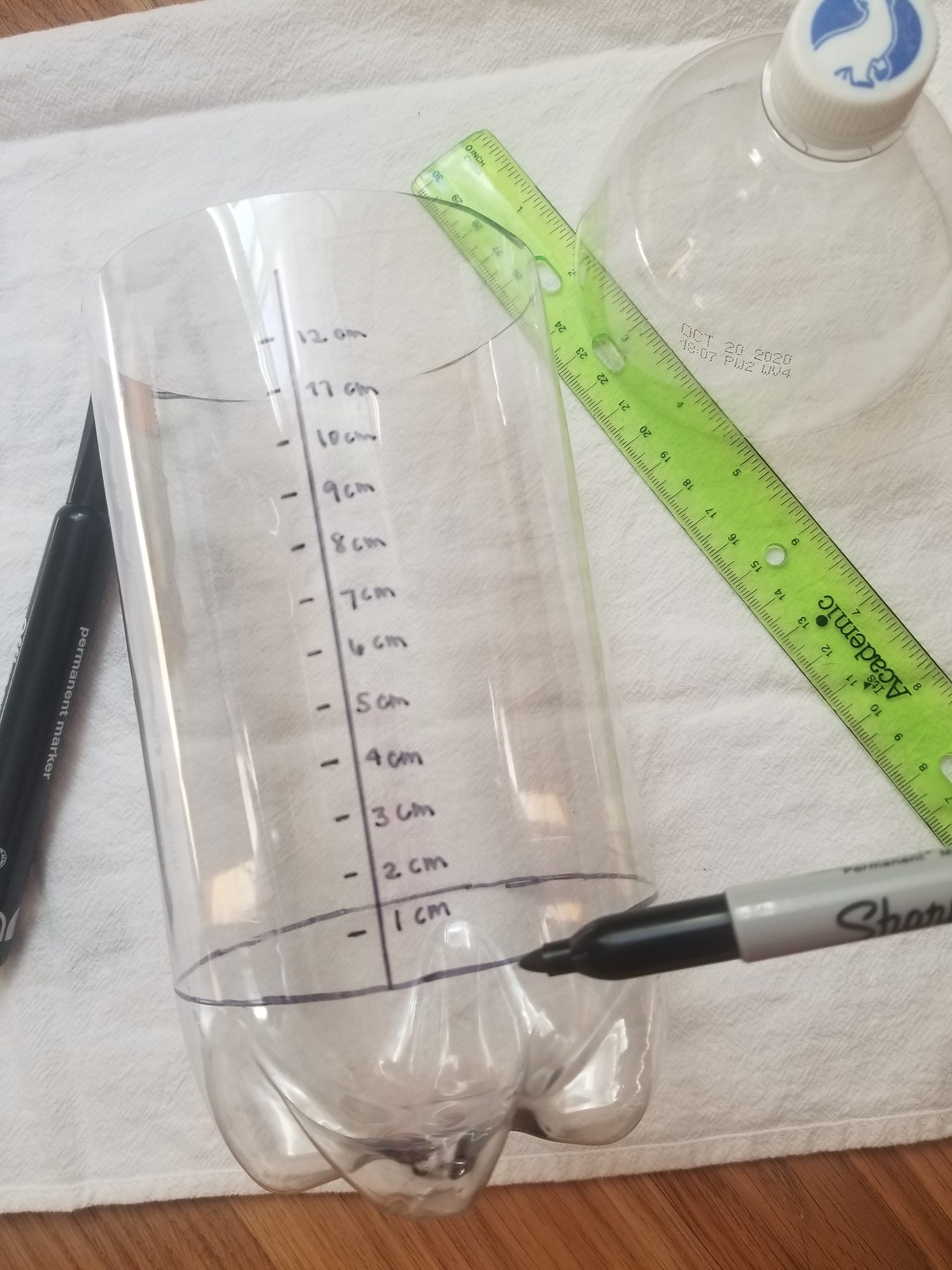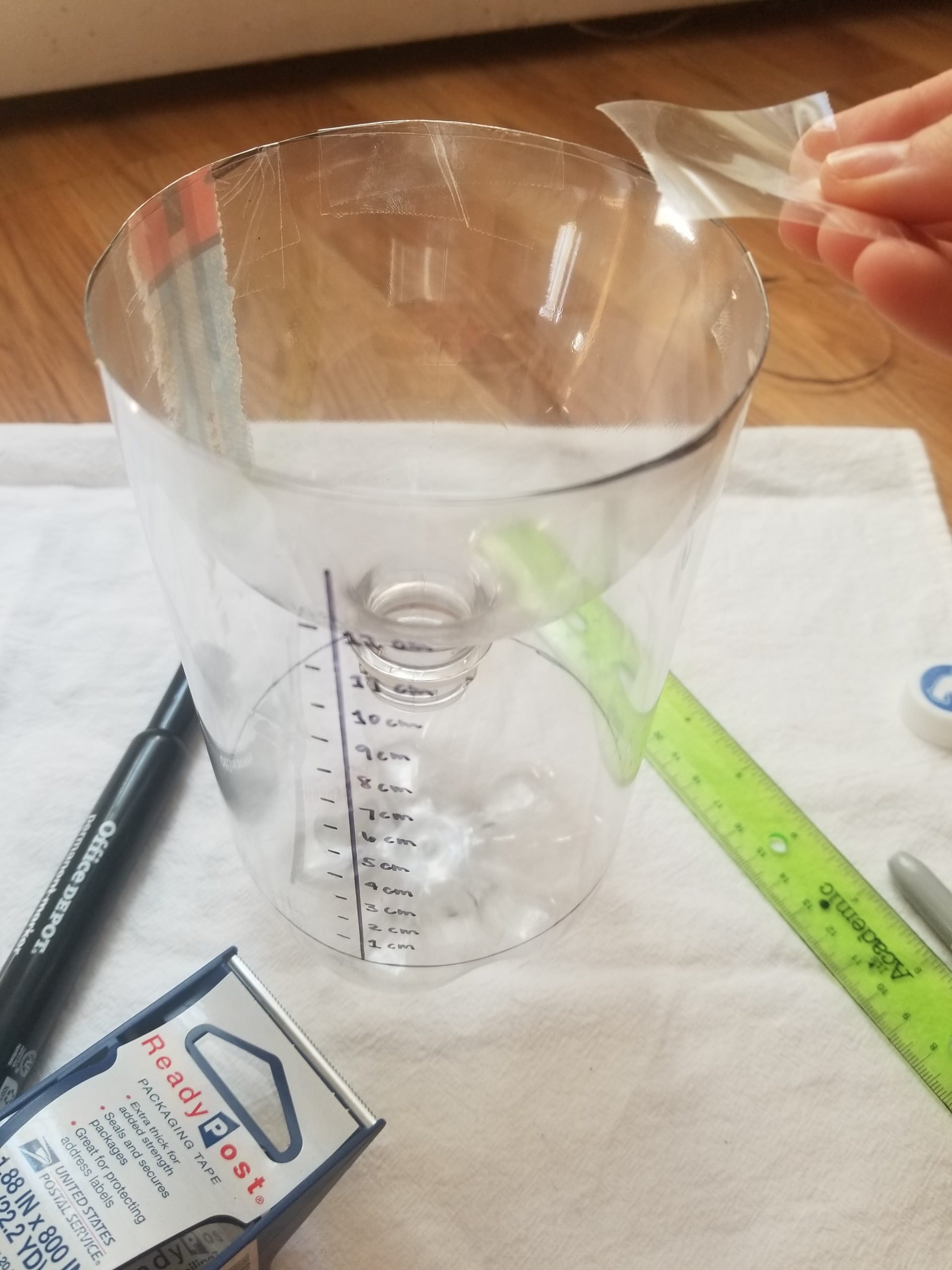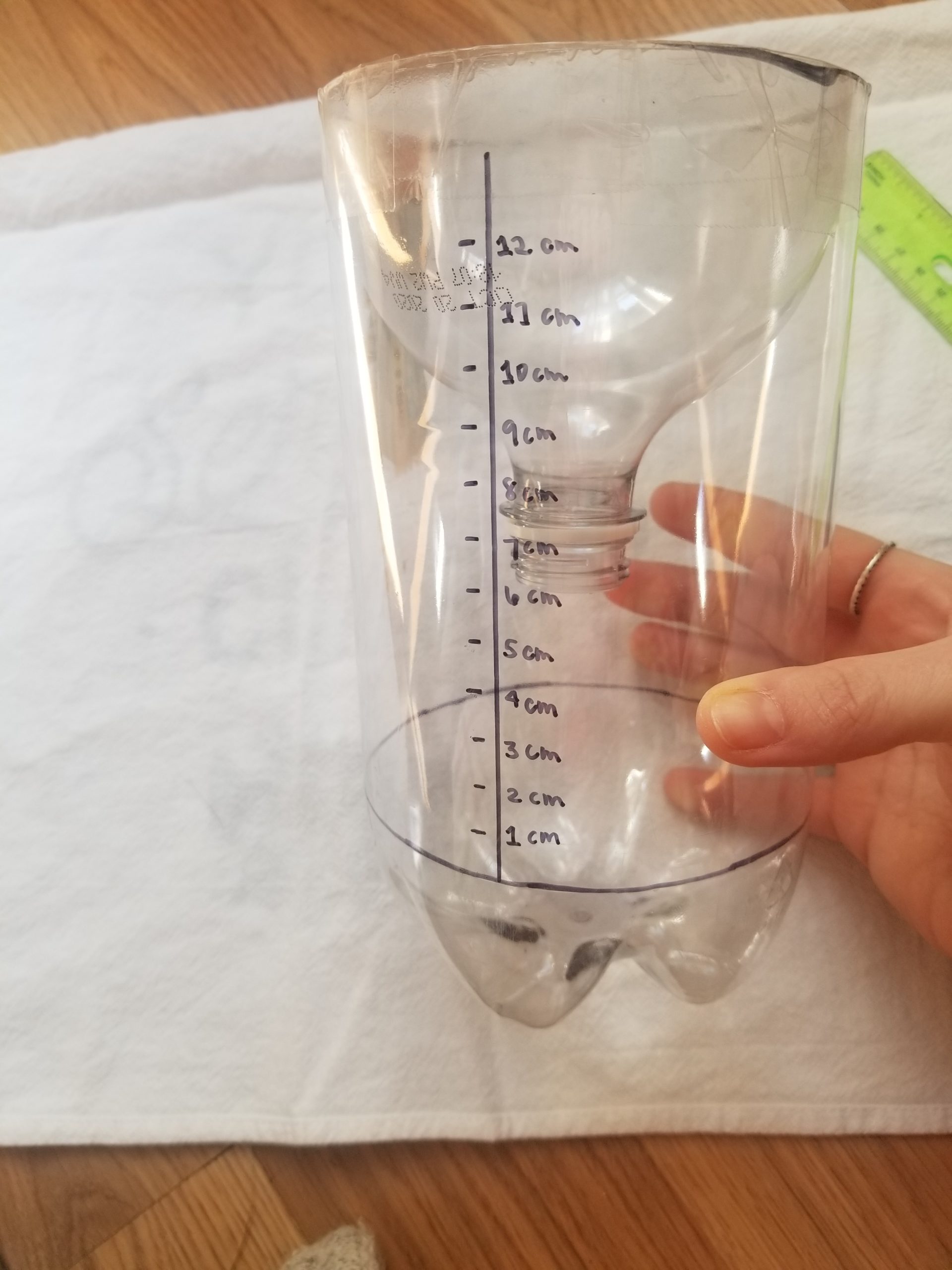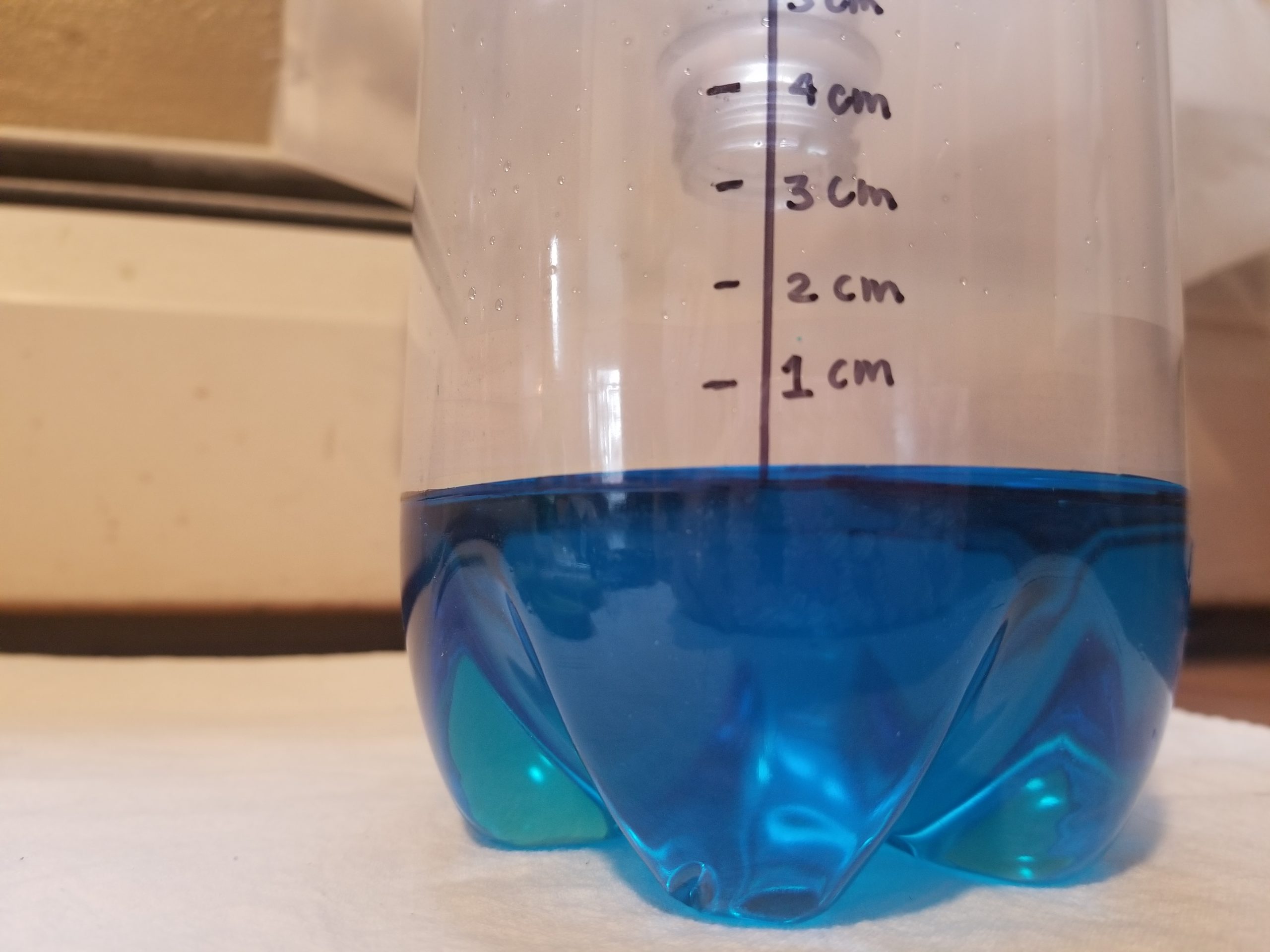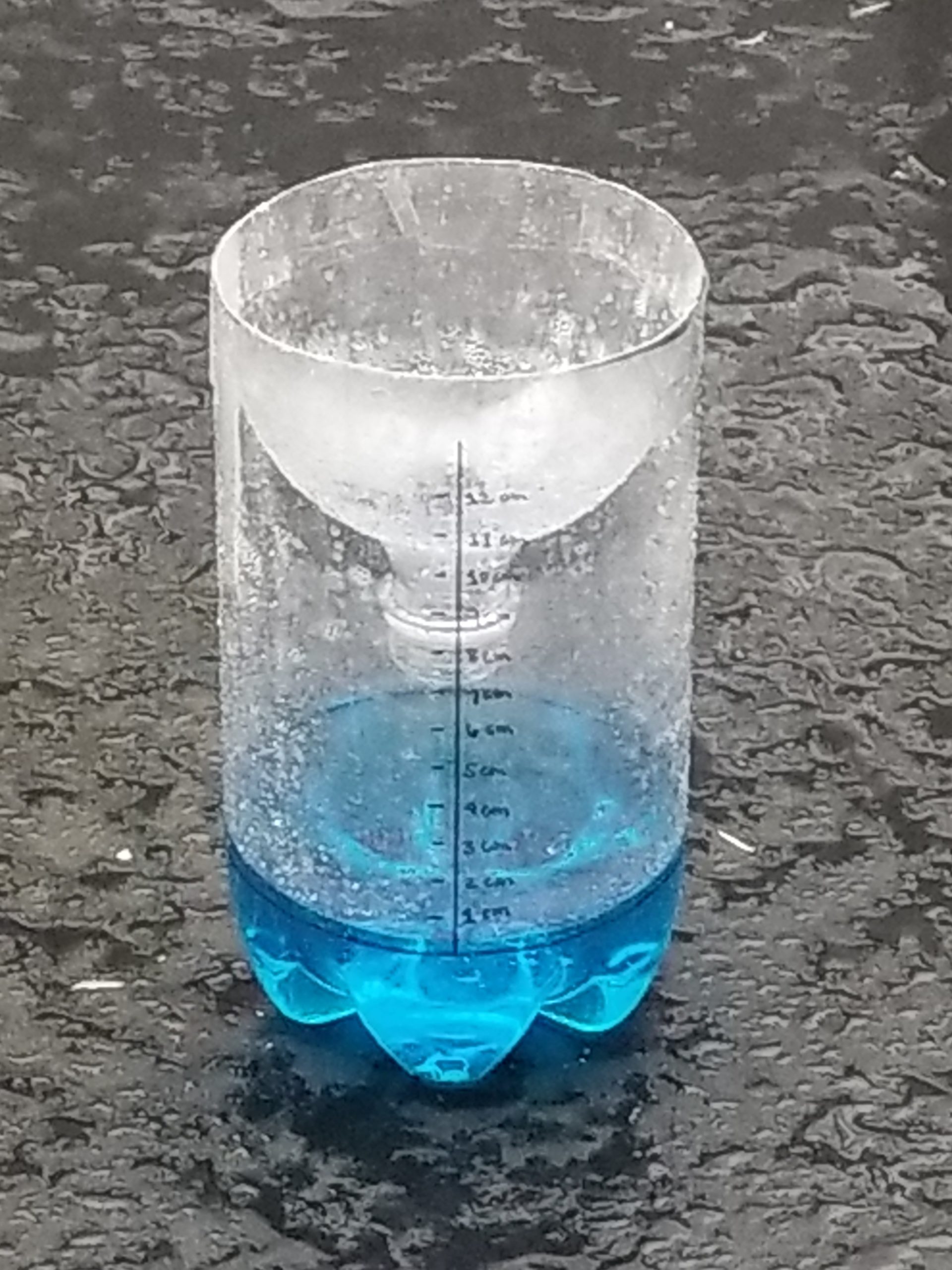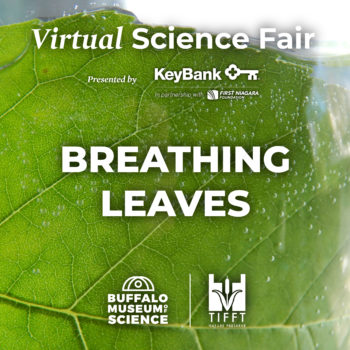Rain Gauge
Have science fun as a family! Complete activities with parental supervision.
Materials:
- Plastic pop bottle (12oz or larger)
- Permanent marker
- Ruler
- Scissors
- Tape
- Food coloring
Procedure
- Remove the label and cut off the top of the pop bottle where the neck starts to taper in; save the top for later.
- Draw a solid line around the bottom of the pop bottle where the base and the body meet – this is where your rain measurements will start after completion.
- Using a ruler mark up the body of the pop bottle every centimeter until you run out of room.
- Put the top of the pop bottle (without the cap) into the body of the pop bottle – like a funnel – and tape around the edges to seal it shut.
- Fill the bottle with colored water to the 0 cm line.
- Place your rain gauge outside on a flat surface with exposure to the elements.
- Check your rain gauge daily or after a large rainfall to see how much water you’ve collected.
- Write down the new starting level each time unless you’re siphoning out excess towater to 0 cm each rainfall.
- Be sure to take a picture or video to share in the Facebook comments on the Buffalo Museum of Science or Tifft Nature Preserve pages.
What’s it all about?
A meteorologist is a scientist who studies the atmosphere and what happens there in order to understand, explain, and predict the weather. A rain gauge is a useful tool for meteorologists to observe how much precipitation falls in a given location during an amount of time.
Measuring how much rain falls in your area is important in identifying weather patterns, knowing the best times for planting and even what plants to plant. Rain gauges can even be used in identifying potential conditions for flooding.
Try It!
Measure your rain gauge every morning when you wake up and every evening before you go to bed and what clouds are present in the sky at that time; make sure to record your observations.
Do you notice that more rain falls when the skies are cloudier? Do certain clouds bring more rain? How long do you think it would take to fill your rain gauge?
